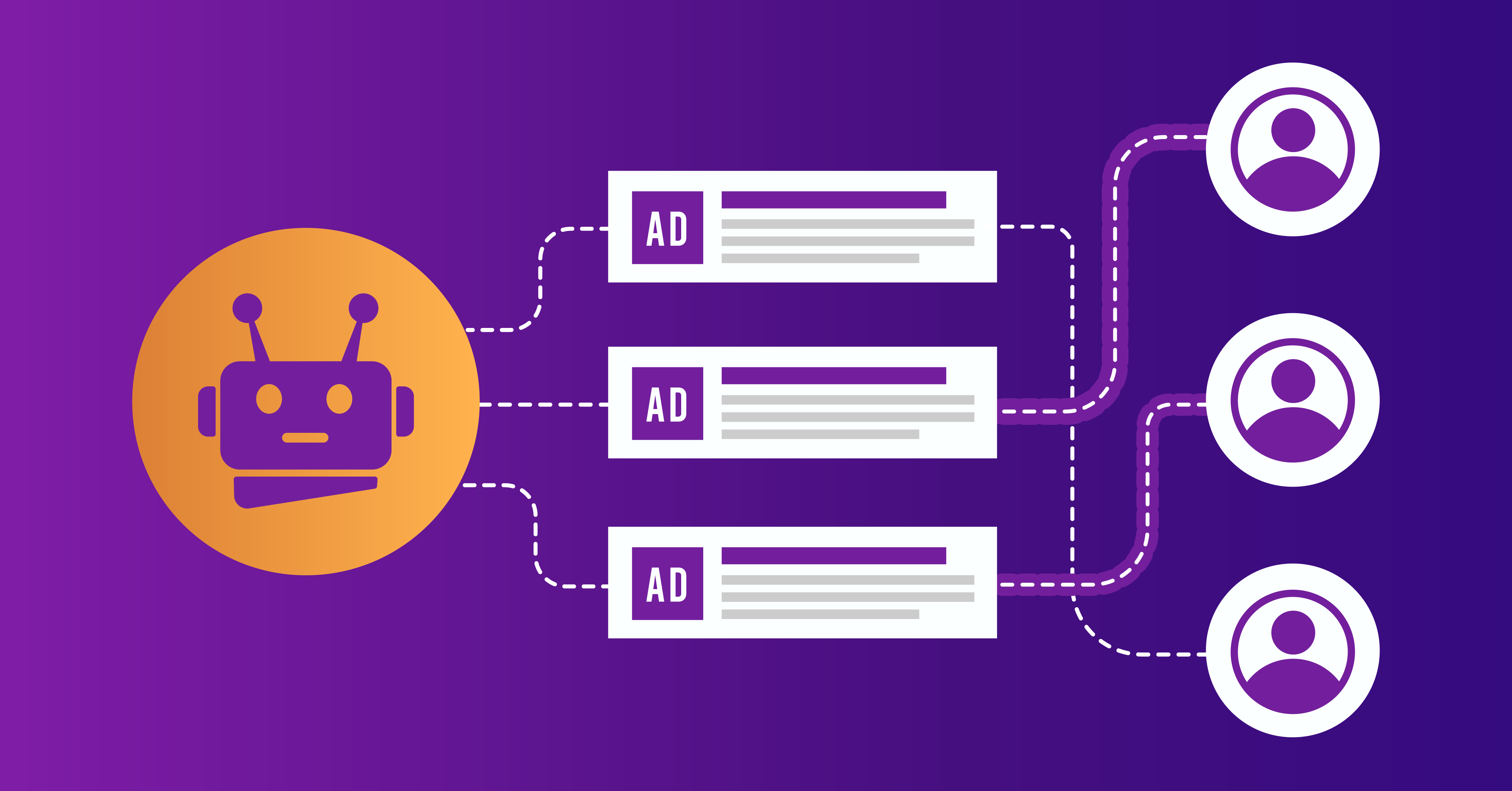What is Contextual Advertising?
Amidst the dynamic and rapidly changing advertising industry, publishers have experienced a profound transformation in their approach to reaching audiences effectively. Gone are the days when ad content solely focused on capturing attention, often disregarding the significance of context and content alignment. However, in today’s world, publishers have awakened to the realization that true success lies in the harmonious interplay of context and content.
In the past, advertising primarily relied on a one-size-fits-all approach, attempting to blanket audiences with generic ads that lacked personalization and relevance. Such disconnected strategies led to a less-than-optimal ad success rate, leaving audiences unimpressed and unengaged. The hollowness and transient nature of these endeavors became evident, as long-term success eluded many publishers.
Today, contextual advertising has emerged as the guiding light for publishers, empowering them to deliver a more meaningful and engaging user experience. By leveraging cutting-edge deep learning technologies, ML and AI in programmatic advertising publishers now possess the ability to comprehend context, ensuring that the ad content seamlessly aligns with the surrounding content, creating a fluid and immersive reader and user journey.
What is contextual advertising?
Contextual advertising is an advertising strategy where ads are displayed to users based on the context of the content they are consuming. This targeted advertising strategy ensures that ads are displayed based on the content of a webpage, app, or platform, as well as the interests and characteristics of the users interacting with that content.
It involves analyzing the surrounding content and understanding its meaning and relevance to present ads that align with the users’ interests and preferences. For publishers, contextual advertising offers a more targeted and personalized approach to engaging their audiences, leading to higher ad success rates and improved user experience.
The integration of AI, Deep Learning, Machine Learning (ML), and Generative AI in ad tech has revolutionized contextual advertising. Publishers leverage these advanced technologies to optimize ad placement and content matching, ensuring that ads are contextually relevant and resonate with the audience.
Here’s how these technologies contribute to contextual advertising.
- AI
Artificial Intelligence plays a central role in contextual advertising. It enables systems to process and comprehend vast amounts of data quickly, allowing publishers to identify patterns, trends, and user behavior. AI algorithms analyze content and user data to make real-time bidding and ad placement decisions, delivering relevant ads to the right audience.
- Deep Learning
This subset of AI allows systems to learn from data representations. In the context of advertising, deep learning algorithms can analyze complex relationships between content and user preferences, extracting valuable insights for more precise ad targeting.
- Machine Learning (ML)
ML algorithms learn from historical data to predict user preferences and behaviors. In contextual targeting, ML models can analyze user interactions with content and ads to tailor future ad displays accordingly.
- Generative AI
Generative AI involves creating new data instances that resemble existing data. In the context of contextual advertising, generative AI models can produce ad variations that align with specific content, ensuring greater personalization and engagement.
How does contextual advertising work?
Contextual advertising works by analyzing the context of the content that a user is currently consuming and displaying relevant ads that align with that context. The process involves several steps:
- Content Analysis
The first step is to analyze the content on a webpage, app, or platform where the ad will be displayed. This analysis includes text, images, videos, and other relevant information. The analysis of the content on a webpage, app, or platform to enable contextual advertising is typically performed by artificial intelligence (AI) and machine learning (ML) algorithms. These algorithms are designed to process and understand the content to identify relevant keywords, topics, and themes.
- Keyword Extraction
The system identifies important keywords and phrases within the content that provide insights into its subject matter. NLP algorithms are employed to extract keywords and phrases from the content. These keywords are essential for understanding the main topics and themes covered in the content.
- Contextual Matching
Once the keywords are extracted, the contextual advertising platform matches them with relevant ad categories or topics. Advertisers have predefined categories or keywords for their ads, ensuring they are contextually appropriate.
- User Profiling
Simultaneously, the platform may consider the user’s profile, which includes their browsing history, search queries, and behavior, to further refine ad targeting.
- Real-Time Decision
Based on content analysis, keyword extraction, and user profiling, the platform makes real-time decisions about which ad to display to the user.
- Ad Display
The selected ad is then displayed in a visually appealing format, typically as a banner, native ad, or in-stream ad, ensuring it blends seamlessly with the user’s overall experience.
- User Engagement
When the user interacts with the ad (e.g., clicks on it), the platform may gather additional data to improve future ad targeting.
What is the difference between contextual advertising and behavioral targeting?
Contextual advertising uses contextual targeting as its primary strategy. It focuses on the content and context of the webpage or platform where the ad will be displayed. The ad displayed is selected based on the identified context of the content. The goal is to present an ad that is highly relevant to the user’s current interests and the content they are viewing.
In a contextual advertising example below, the article’s content is centered around investments, indicating that the web page’s context revolves around financial topics and money management. The ad displayed alongside the article is specifically promoting a savings plan, which aligns perfectly with the content’s theme.
The key principle behind contextual advertising is to match the advertisement’s content with the context of the webpage or platform on which it appears, increasing the likelihood of engagement and potential conversions.
Behavioral targeting, on the other hand, involves analyzing the user’s online behavior, such as their browsing history, searches, and interactions with previous ads, to deliver personalized ads that match their interests and preferences. If a person sees ads that appear to be specifically tailored to their past behavior and not related to the current content they are viewing, it could be an indication of behavioral targeting.
Unlike the contextual advertising example, in the below image, there is a skincare ad displayed on a political news piece. The likelihood of this happening as a result of behavioral targeting is quite plausible.
Here’s something important to note: the presence of a non-contextual ad on a website does not necessarily mean that the advertiser is using behavioral targeting.
There could be several reasons why a non-contextual ad is displayed:
- Default ads
- Limited inventory
- Manual ad selection
- Ad placement strategy
- Geographic targeting
- Demographic targeting
How does contextual advertising help increase ad revenue for publishers?
Contextual advertising can significantly help publishers to level up their website monetization as it enhances the overall effectiveness and performance of ad campaigns. Here’s how it achieves this:
- Higher relevance
Contextual advertising ensures that the ads displayed to users are highly relevant to the content they are consuming. When ads align with the users’ interests and current context, they are more likely to capture their attention and engage them, leading to higher click-through rates and ad interactions.
- Increased user engagement
When users find ads relevant and valuable, they are more likely to interact with them. This increased engagement translates into higher ad impressions, clicks, and conversions, which ultimately maximizes the ad revenue for publishers.
- Improved user experience
Contextual advertising provides a seamless and non-intrusive user experience. As the ads are contextually relevant, they blend naturally with the content, making them less disruptive and more appealing to users. This positive user experience encourages users to spend more time on the website, increasing ad exposure and revenue potential.
- Better ad inventory utilization
Contextual advertising ensures that the right ads are displayed to the right audience at the right time. This optimized ad targeting helps in utilizing the ad inventory more efficiently, reducing wasted impressions and increasing the chances of ad success.
- Higher advertiser satisfaction
Advertisers appreciate the effectiveness of contextual advertising as it delivers their messages to a more receptive and targeted audience. Satisfied advertisers are more likely to continue investing in contextual ad campaigns, leading to increased demand for ad space and, subsequently, helping publishers take monetization to the next level.
- Personalization and retargeting
Contextual advertising can be combined with user profiling and retargeting techniques. By understanding user behavior and preferences, publishers can deliver personalized ads to specific user segments, further increasing ad relevance and engagement.
- Competitive advantage
Publishers who adopt contextual advertising gain a competitive advantage in the advertising market. Advertisers are more inclined to collaborate with publishers who can deliver effective, contextually relevant ad campaigns, attracting premium advertisers and higher-paying ads.
What are the benefits of contextual advertising?
Contextual advertising excels in several key areas, making it highly important and valuable for both advertisers and publishers:
- User experience
By seamlessly blending with the surrounding content, contextual ads offer a non-intrusive and organic user experience. Users are less likely to find them disruptive, making it more likely they will have a positive perception of the ad and the brand behind it.
- Real-time decision making
Contextual advertising relies on real-time analysis of content and user data to make ad placement decisions. This dynamic approach ensures that ads are always up-to-date and contextually appropriate.
- Content-focused
Contextual advertising places emphasis on the content itself, which can be particularly beneficial for publishers focused on delivering valuable and informative content to their audience. It aligns ads with the user’s intent while consuming that content.
- Brand safety
Contextual advertising allows advertisers to ensure their ads follow brand safety protocols so that the ads are displayed in appropriate environments. They can avoid association with controversial or irrelevant content, safeguarding their brand reputation.
How can publishers get started with contextual advertising?
Here’s step-by-step guidance on how publishers can start with contextual advertising.
- Content platform
They must have a website or app with valuable content that attracts a target audience. The content should cover a variety of topics and be regularly updated.
- Ad tech platforms
Publishers must carefully identify and sign up with contextual advertising or ad tech platforms. Some popular options include Google AdSense, Media.net, and Amazon Associates, among others.
- Content analysis tools
They must consider using tools that can help analyze their content and extract relevant keywords. Platforms such as Google AdSense and Google Analytics 4 offer tools to assist with this process.
- Implement contextual advertising code
Once approved by the contextual advertising platform, they will receive an HTML code snippet that they must Implement on their content platform- website or app to enable contextual advertising.
- Ad placement
They must place the contextual ads in strategic locations on their website or app that receive high traffic, are easily visible to users, and complement the overall design to improve UX.
- Monitor performance
Publishers must regularly monitor the performance of their contextual ads using the analytics provided by the ad tech platform. They can track important metrics such as ad impressions, clicks, and revenue generated.
- Optimize content and ad placement
Based on the performance data, they must analyze which types of ad formats, ad placements, and content work best and optimize their content strategy and ad placement accordingly to maximize ad revenue.
Contextual advertising is undeniably the future, standing tall as one of the foremost programmatic ad trends that publishers must incorporate into their ad strategy. Embracing this approach allows them to adapt to the ever-evolving landscape while effectively engaging users in a meaningful manner, enriching their experience on the website.
Moreover, contextual advertising complements the advertiser’s message by seamlessly integrating it with relevant content, forging a deeper and more purposeful connection with the target audience. As the digital advertising landscape continues to evolve, contextual advertising emerges as a powerful tool that brings value to all stakeholders involved – publishers, users, and advertisers alike.




Leave a Reply